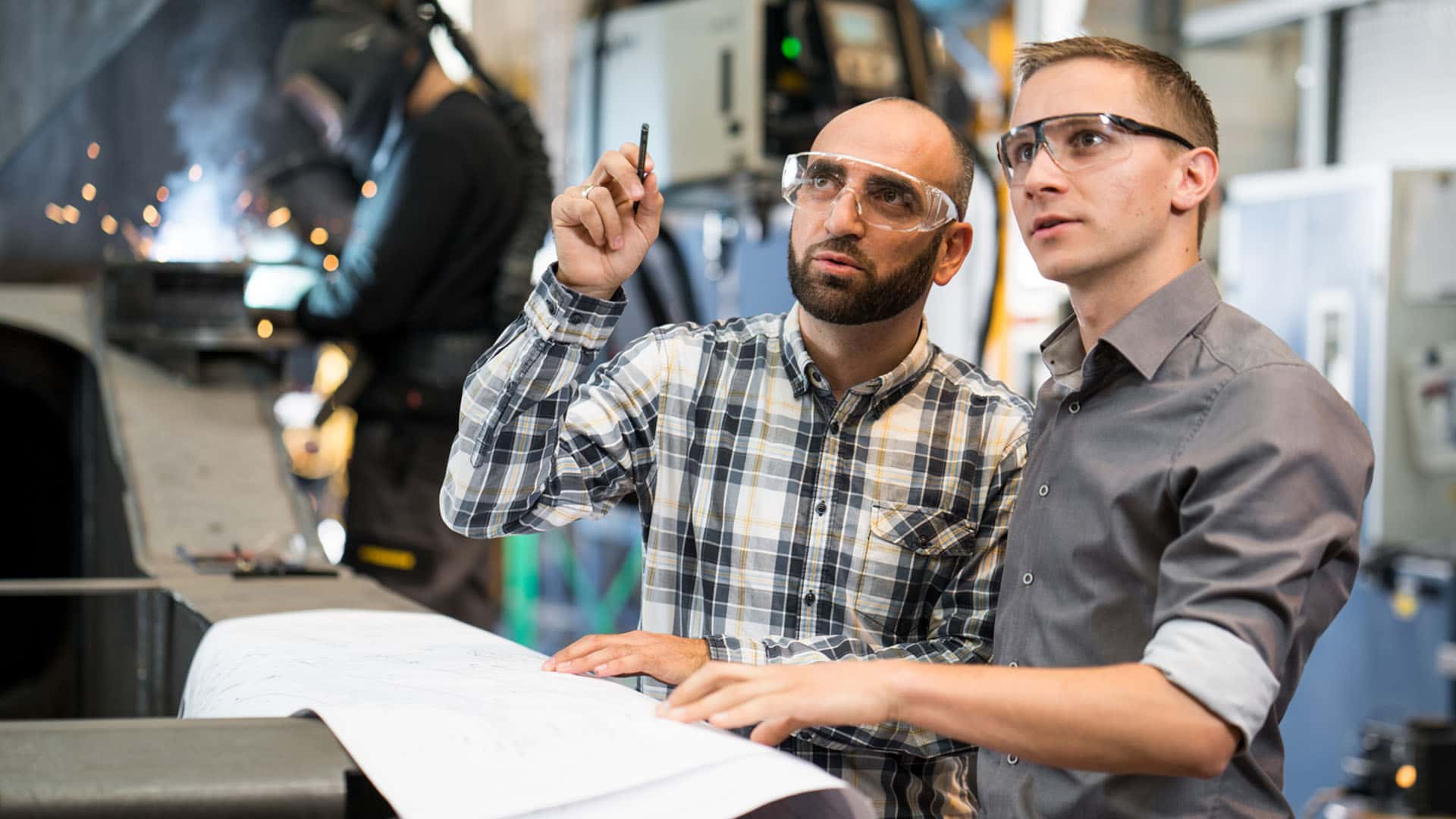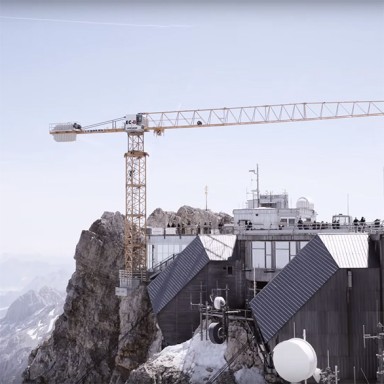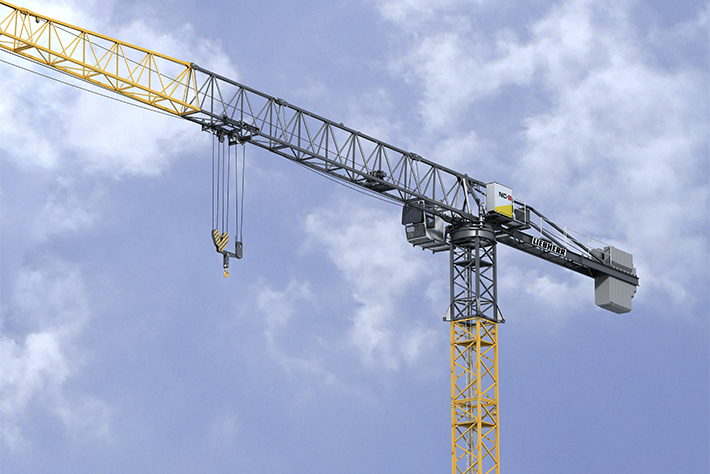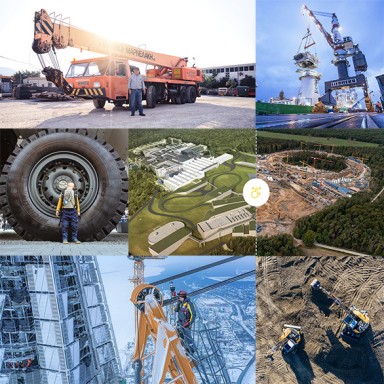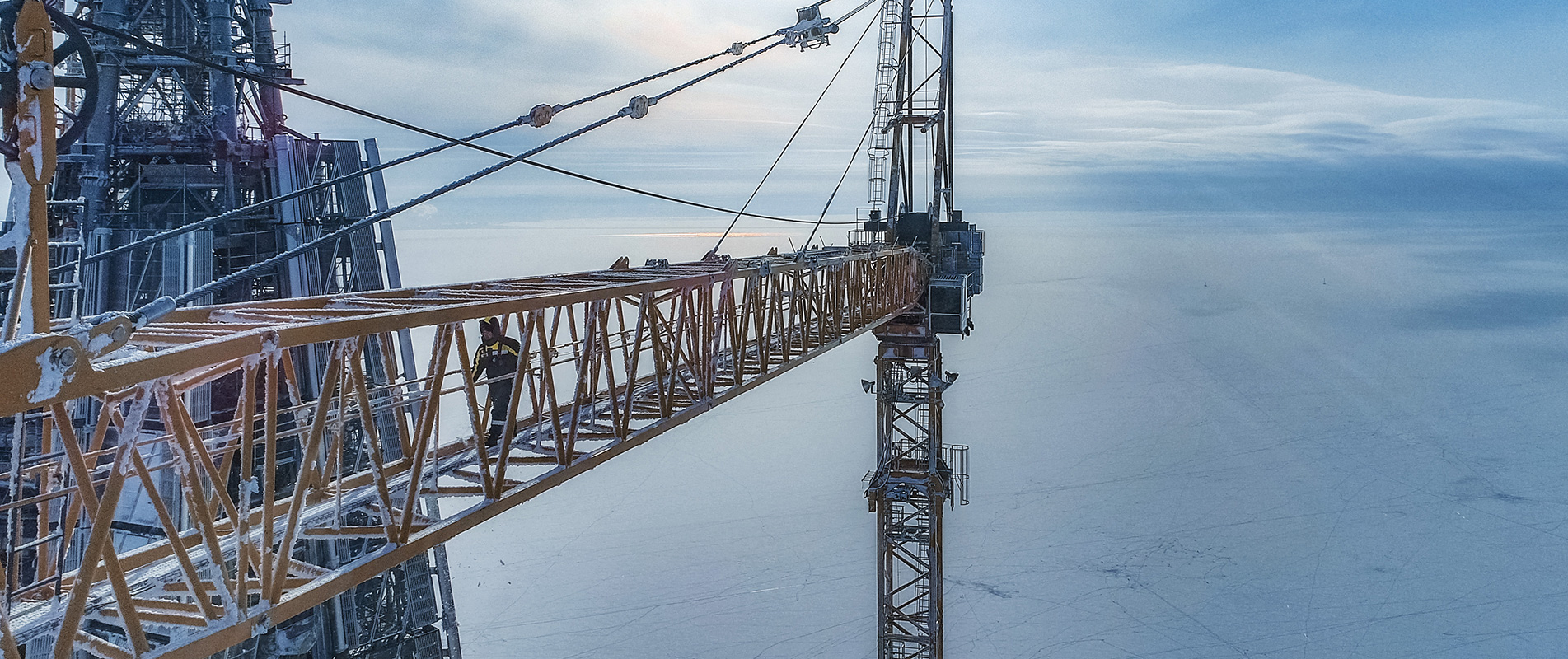
8 minutes reading time
At icy heights
Four tower cranes were in continuous operation during the construction of Europe’s tallest building, the Lakhta Tower. At dizzying elevations, a Liebherr service technician made sure that everything ran smoothly, even in extreme weather conditions. We take a look back.
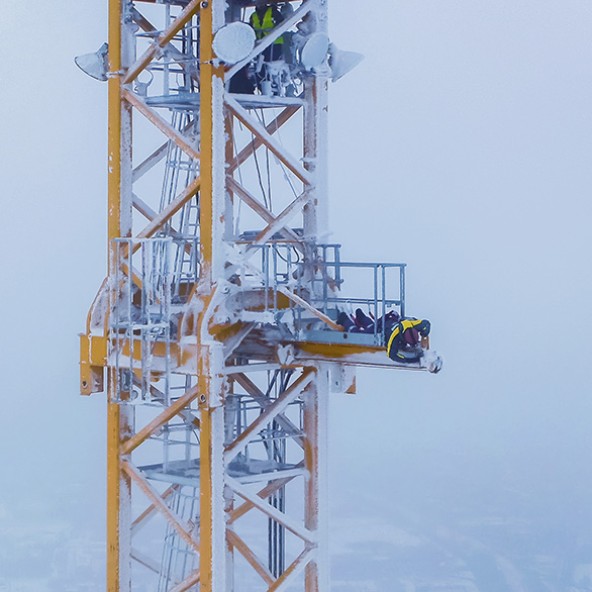
Service as a high-wire act
430 metres above the abyss. Secured only by a climbing harness and a carabiner. Enveloped in thick fog. Icy wind whistles through the tower crane’s metal struts. Ivan Dikun lies face-down on a narrow metal walkway, so that he can check a sensor on the tower crane. “Up here, the constant wind and cold winter temperatures are our biggest challenges,” explains the service technician, who needs to keep a clear head even under time pressure. Today, the crane he is climbing on is shut down for scheduled routine maintenance. In an emergency situation, service work has to be performed as quickly as possible, so as not to hold up construction. Work on the new Saint Petersburg landmark can only continue once maintenance is completed.
At 462 metres, the Lakhta Tower is currently the tallest building in Europe. The skyscraper is located around ten kilometres from the city centre, directly by the Gulf of Finland. To build the high-rise, construction firm Renaissance Construction used three type 710 HC-L 32/64 Litronic tower cranes, as well as one 357 HC-L 12/24 Litronic. A hydraulic system allowed the cranes to climb up the external facade and inside of the tower. They were always one step ahead of the skyscraper.
We always need to think about our own safety and that of the other workers – no matter how high up we are..
Under extreme conditions
Service technician Ivan Dikun made sure of it. At more than 400 metres up in the air, even standard tasks like checking limit switches and sensors are a high-wire act. For example when the service technician walks along the jib of the tower crane. Every few metres, he has to rehook the carabiner onto the guide rope that will catch him if he falls. “We always need to think about our own safety and that of the other workers – no matter how high up we are,” says Dikun. A dropped tool could be just as deadly as a fall.
Yet the real challenge on the Lakhta Tower is not its record-breaking height, it is the weather. “We are right next to sea and only about 1,000 kilometres from the Arctic Circle. Temperatures can get down to minus 32 °C here, with winds over 130 km/h,” Dikun says. Proper work clothes are essential to defy the weather. The tower cranes are designed to work under extreme conditions like these. But for safety reasons, maintenance tasks can only be carried out in winds of up to 72 km/h. So service technicians have to respond flexibly to weather conditions on site. This job calls for a steady hand, as well as a head for heights. “There is definitely a knack to changing oil in the wind, to make sure you don’t spill any,” the technician smiles. Apart from routine maintenance jobs like these, he and his colleagues at Tower Crane Customer Service assist distributors and customers with more challenging installations when required, or when the tower cranes have to be dismantled.
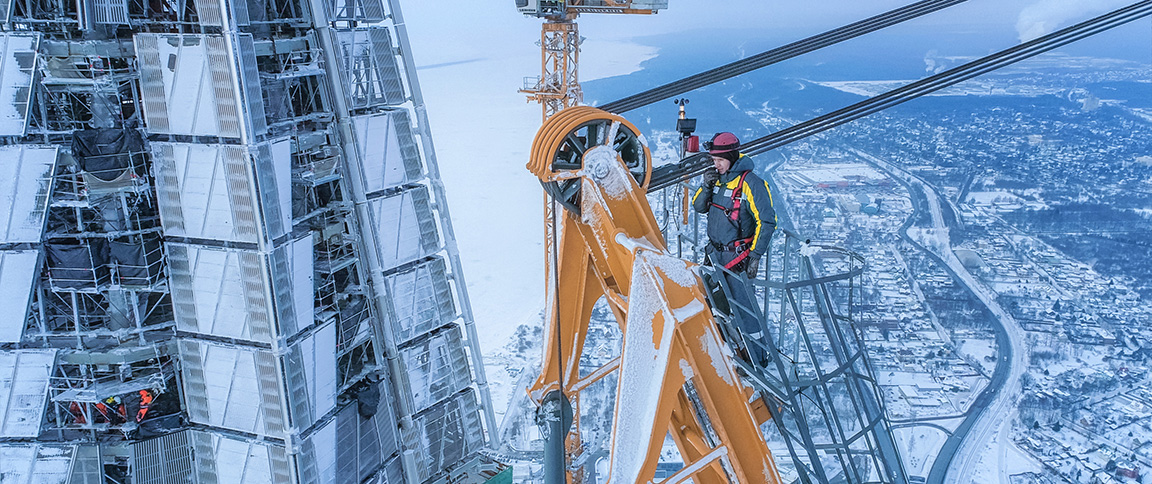
The biggest challenge was certainly the extreme building height. At 462 meters we need very powerful tower cranes.
87 storeys in record time
Construction of the Lakhta Tower started in 2015. Work on the outside of the skyscraper was completed this year, and interior work is now underway – after a build time of only three years. It was a very tight schedule for a project of this size. Added to that, a mixed-use development with office space as well as sport and leisure facilities was built at the same time as the high-rise. Six more Liebherr tower cranes were used for this part of the project.
“Consequently, one special requirement we had was for technical support from Liebherr throughout all phases of our project,” says Rustam Doshchanov, project manager at Renaissance Construction. The construction company worked closely with Liebherr's own project department Tower Crane Solutions one year before construction began. „The earlier we come into the process, the better we will be able to adjust the crane concept to the construction site and to our customer in an individual way”, explains Benedikt Bärtle who is in charge of planning the project for Tower Crane Solutions.
During the planning phase the height of the building and the extreme weather conditions played a significant role. In order to guarantee rapid construction progress of the Lakhta Tower, very powerful tower cranes had to be employed. The decision was therefore made to use three 710 HC-L 32/64 Litronic tower cranes with a maximum working load of up to 64 tons and lifting speeds of up to 176 metres per minute. However, not only is the height of the building a challenge – so is its shape. The skyscraper resembles a gas flame tapering out at the top. The construction of the tower is unique with each floor being different. There can be thus no question of a standardized solution. The way the cranes climb up the building was individually adapted to the facade concept and the construction progress of the building.
Every construction phase is planned exactly. But in such large-scale projects it doesn’t only come down to that since not everything can be planned for. “We have to respond at short notice to the construction site and examine possible alternative approaches. For example when components have to be lifted that are heavier than originally planned,” says Bärtle.
The engineers from Biberach work closely together with Renaissance Construction and the service technicians of Tower Crane Customer Service on site, to enable a flexible and swift response. “Fast reaction times for repair and maintenance work are extremely important to us, because any hold-up in the crane’s operation would have delayed the construction work,” Doshchanov adds.
Ivan Dikun is aware of this too, as he completes his maintenance work about two hours later. “Dispatcher, come in. The check is complete, the crane can go back into operation.” Dikun speaks into his crackling radio then starts to descend. As he climbs down the final few metres inside the tower crane, it resumes its work on the tallest building in Europe.


